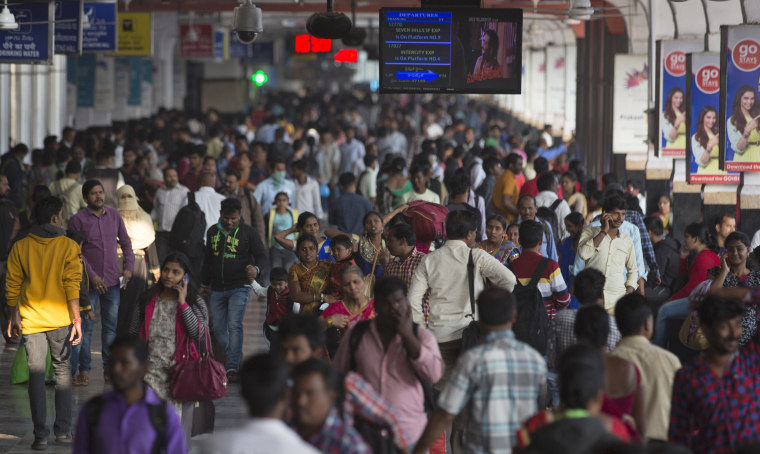The world’s population could swell to 10.9 billion by the end of the century, a new United Nations analysis found, raising concerns that adding more than 3 billion people to the planet could further deplete natural resources and accelerate global warming.
The increase, up from the current count of 7.7 billion people, is expected despite a continued decline in the global fertility rate, which has fallen from 3.2 births per woman in 1990 to 2.5 births per woman this year. Experts say the global fertility rate will continue to decline, but the world’s overall population will still rise, hitting 9.7 billion by 2050.
The new report predicts slower population growth than the U.N.’s last assessment, released in 2017. That estimate projected that the world population would reach a staggering 11.2 billion by the end of the century. The revised figures reflect the downward trend in the global fertility rate, which means the populations of more countries are shrinking.
The fastest growth, according to the new report, is most likely to occur in sub-Saharan Africa, which is expected to double its population in the next 30 years. The report also projected that India would become the world’s most populous country by about 2027, surpassing China, which is expected to see its current population of 1.43 billion dip 2.2 percent by 2050. Over the next 30 years, 54 other countries are expected to see population declines, including Lithuania, Bulgaria, Ukraine and Japan.
The United States is estimated to grow from 329 million people in 2019 to 434 million people by the end of the century, with most of that projected increase owing to migration.
According to the U.N., many of the fastest-growing regions are among the poorest, which could exacerbate issues of hunger and displacement.
Scientists are also concerned about the effect of population growth on climate change. As the global population increases, so will humanity’s footprint on the planet.
“Our impact on the climate is tied up with population in lots of different ways — what resources people are using, how much industrial production is going on, how much energy is needed for heating, cooling and transportation,” Amy Snover, director of the University of Washington’s Climate Impacts Group, said. “All of these things affect greenhouse gas emissions, so the more people we have and the more resources we use, the harder it will be to cope with the risks and impacts of climate change.”
But population growth is just one of the factors driving climate change. Consumption habits also matter, and they’re far from uniform across countries.
“There’s a massive disconnect between where the most population growth is happening and where the greatest consumption is happening,” said Corey Bradshaw, director of the Global Ecology Laboratory at Flinders University in Australia. In other words, the average person’s lifestyle in the U.S. is more detrimental to the environment than the average person’s in sub-Saharan Africa. That means rapid population growth in Africa won’t be as damaging to the environment as a similar population increase would be in the U.S.
In some regions, the increasing population means more people will be vulnerable to rising seas, extreme weather and the spread of infectious diseases, which can all be intensified by climate change.
“People in the least-developed countries already tend to be at higher risk of climate change, so depending on how population growth unfolds across the globe, there’s going to be more people in hazardous areas,” Snover said.
She added that one of her biggest concerns is whether the planet will have enough resources to meet people’s basic needs. Population growth, combined with climate change, could strain agriculture and access to clean drinking water even more.
“These are all big things,” Snover said. “We don’t have the luxury of picking only one problem to focus on because they’re all coming and they’re all coming together.”
Scientists say it’s difficult to know whether there’s a limit to the number of people the planet can sustain — or when we could be approaching it. Still, according to Bradshaw, the 7.7 billion people who inhabit Earth now may already be pushing the planet to a breaking point.
“Even if we maintained the current status quo and not a single other carbon molecule was released because of human activity,” he said, “we’d still see the effects of climate change for at least 300 years from just the emissions that are already in the system.”
SIGN UP FOR THE MACH NEWSLETTER AND FOLLOW NBC NEWS MACH ON TWITTER, FACEBOOK, AND INSTAGRAM.


